Introduction: Liyuan, Qingdao, China
The site of intervention is Liyuan, in Qingdao, China, which is a community full of history and heritage. For various reasons, this community had declined. Therefore, I want to revive Liyuan – including its tangible and intangible heritage.
For Urban Life
In the past, street activities such as open-air markets and outdoor dining were an important part of the community culture, but these disappeared due to the parking of vehicles, as well as the increasing number of illegal buildings. Therefore, the first step was a plan to reduce the speed limit of the roads inside Liyuan to 10km/h, encouraging the use of the roads by pedestrians, rather than vehicles. Then, illegal buildings can be demolished, and the space returned to the residents, allowing the residents to have new squares, urban farms, and more urban public spaces. People can eat and chat on the outdoor tables and chairs on the street as before, and shop in the street during the morning and evening markets on weekends.
The new, open food court, pantry, and other programmes are concentrated on the ground floor of the building, which makes it possible for the courtyard to interact with the street, blurring the boundary between the inside and the outside.
For Neighborhood Life
I wanted the original atmosphere of camaraderie, neighbourliness and friendliness in Liyuan to be restored and enhanced, so I catalogued the communal activities of past, between neighbours. These include doing housework together, holding weddings in Liyuan, sharing books, planting flowers etc. … I transformed these activities into programmes that is added to the courtyard, functioning as spaces such as a farm, outdoor dining place, library, children’s playground and so on.
In addition to this, I wanted everyone living in the block to be able to use all the facilities and functions, so I connected the previously completely closed and separate courtyards through some doorways and corridors on the ground floor.
For Private Life
Different types of houses are designed to ensure the minimum damage to the original buildings. The variations also provide flexible living places for different types of families, and improve the original crowded and poor living environment.
There will no longer only be elderly people living in Liyuan. With the new and improved spaces, young people and children can also have a comfortable and vibrant living environment. Just like life in the past, people of different ages will now live together again.
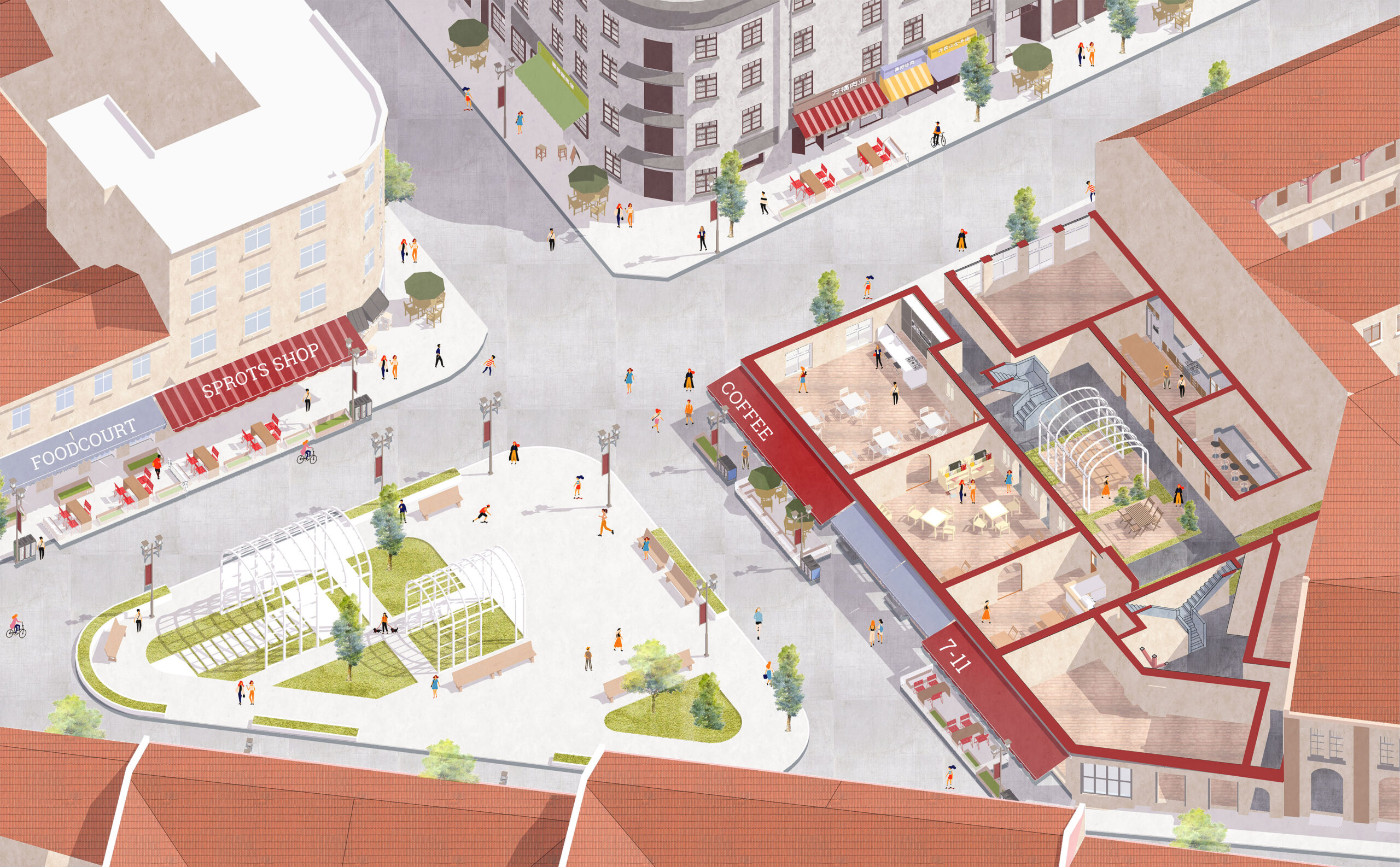
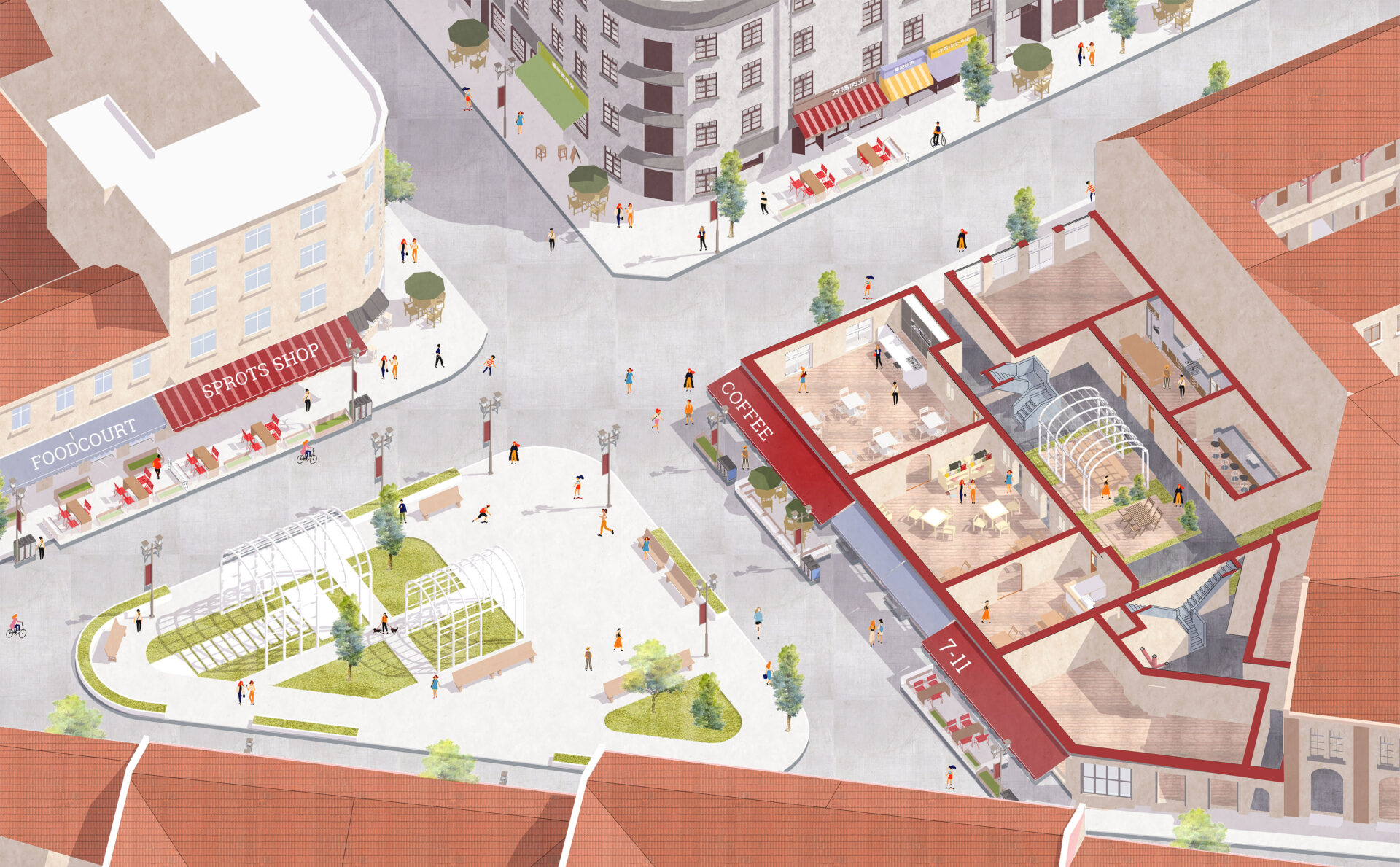
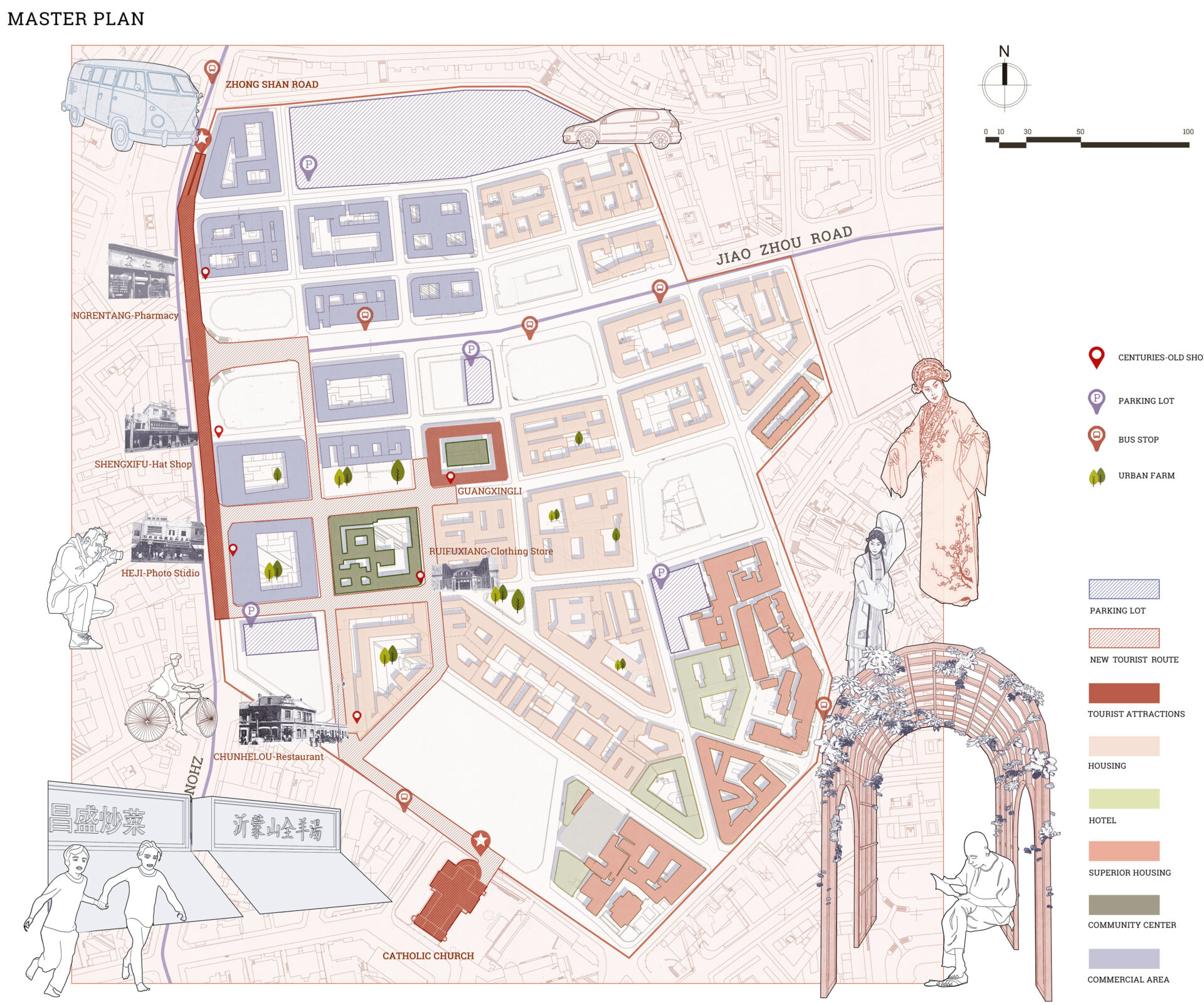
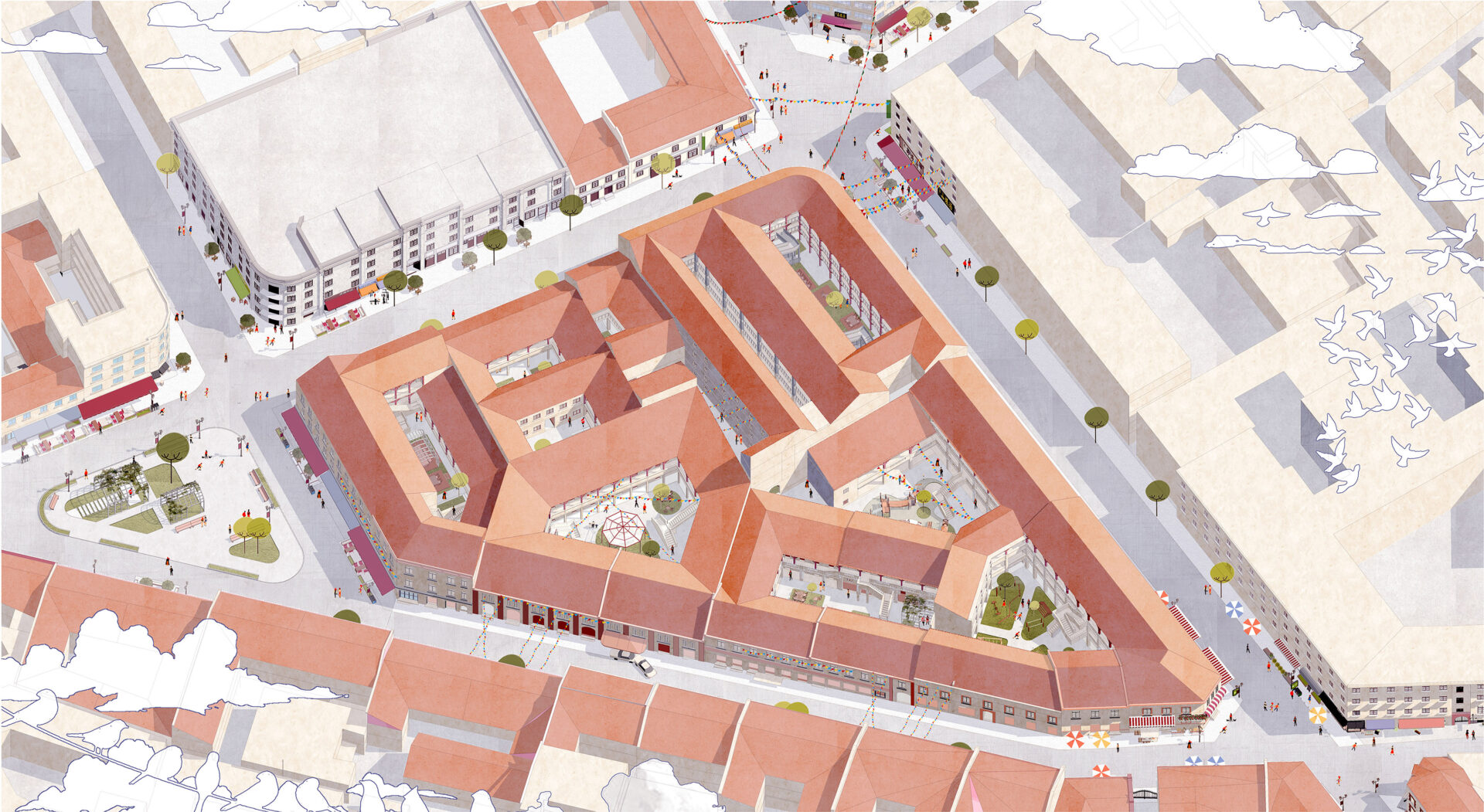
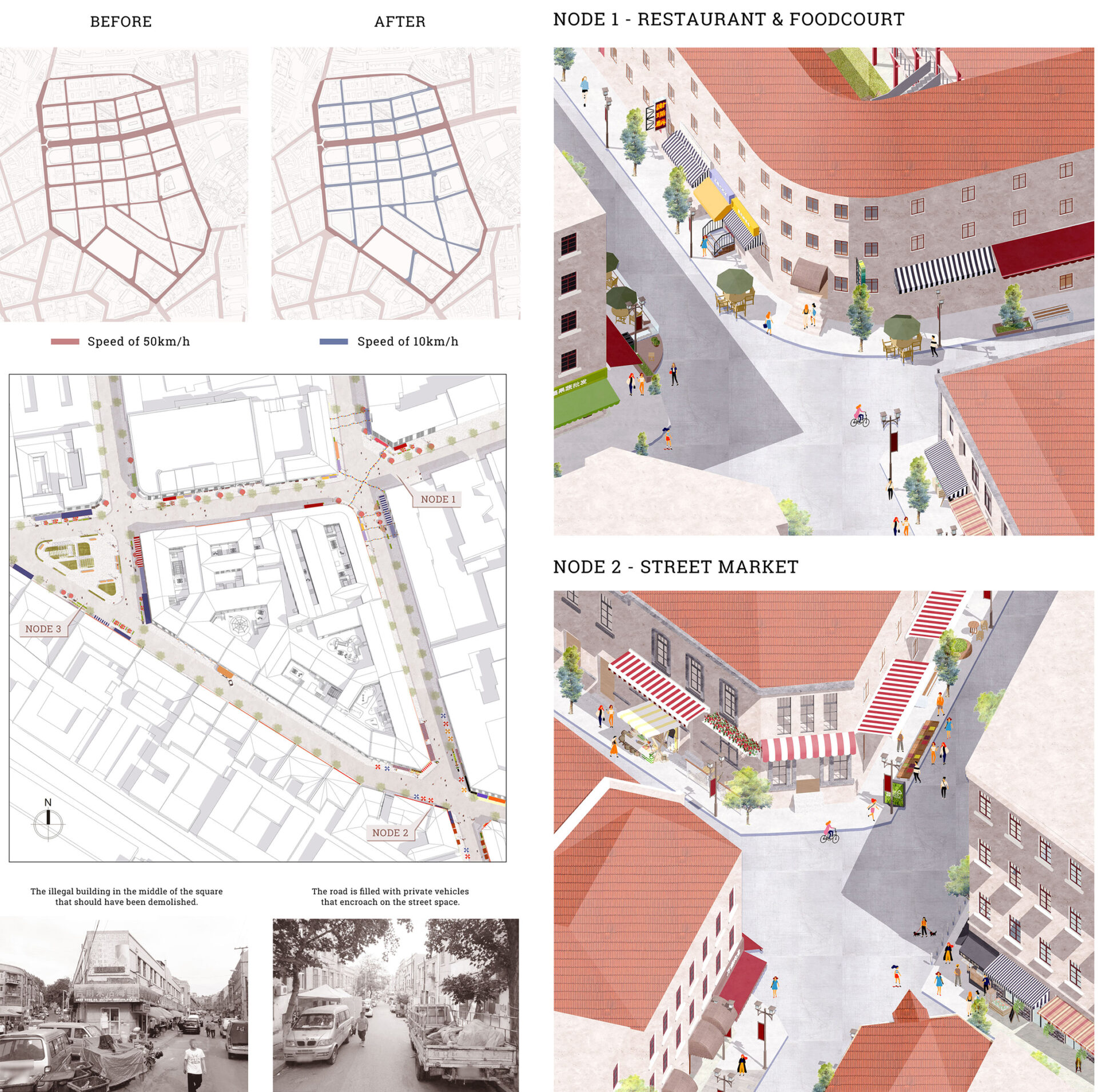
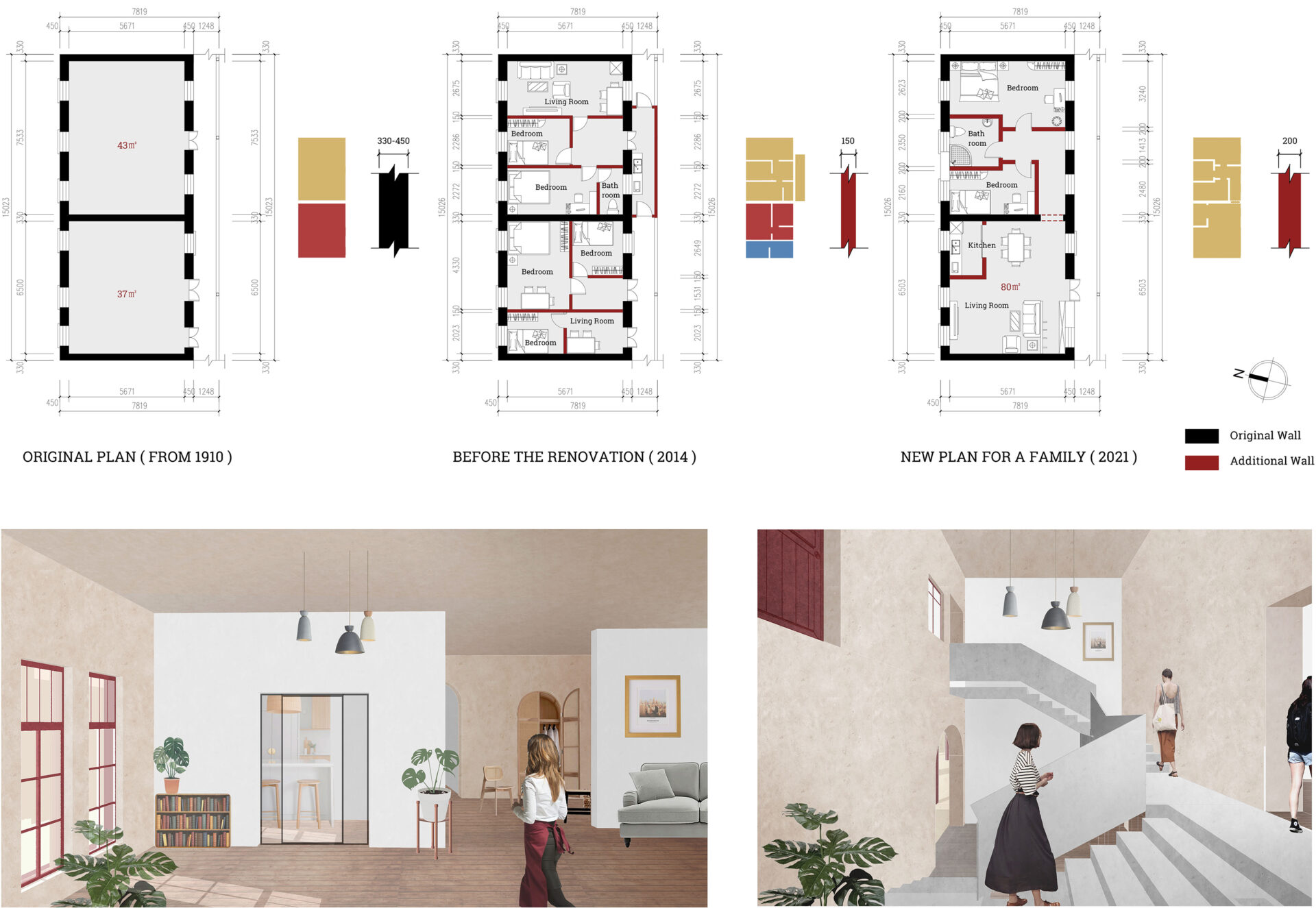
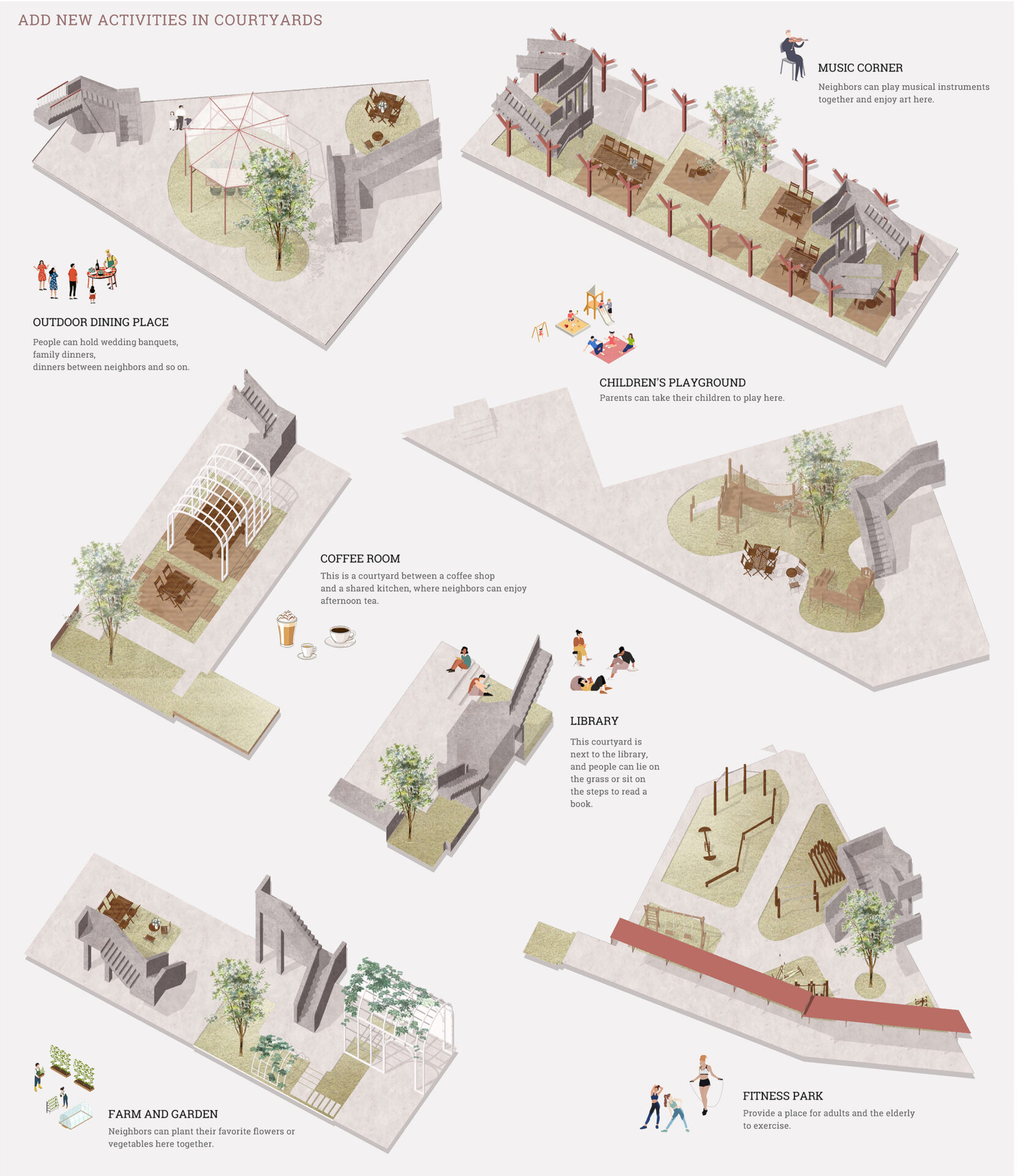

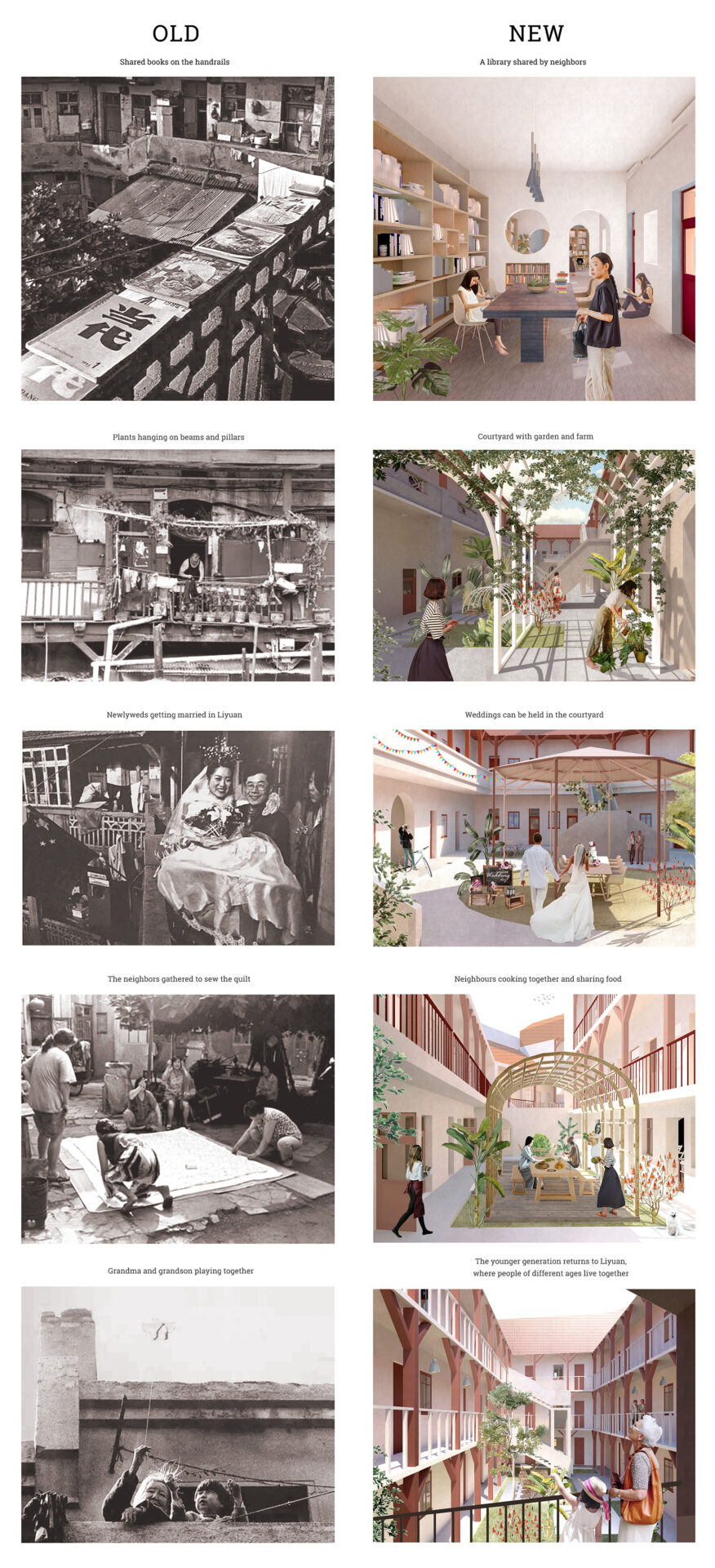
Supervisor's comments:
Preserving physical and socio-cultural authenticity in rapidly developing cities, prioritising economic growth agendas is a real challenge, especially in China. The historic urban areas in the city are often targeted for gentrification and beautification for tourism-related investment. Often the aim is not for preserving the everyday life of the communities living there for generations, but for tourism or commerce. Xiyuan’s thesis is focused on the economics of heritage. Her design thesis retained the community life, enhance the unique architectural block and courtyard typology, and implement a sensitive adaptive reuse strategy supported by a realistic economic viability plan.
- Assoc. Prof. Johannes Widodo (Dr.)